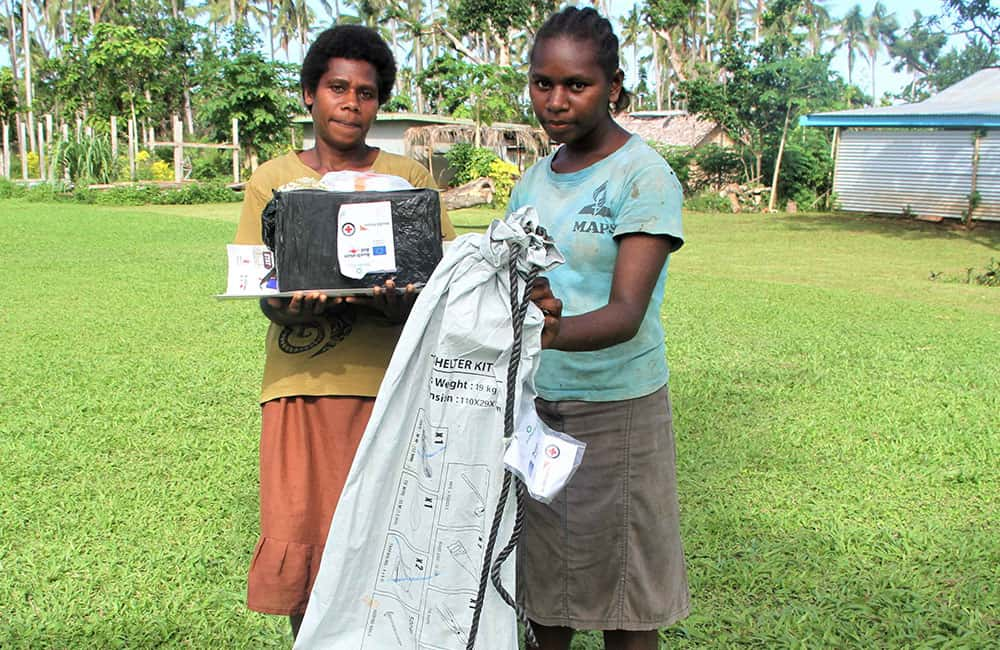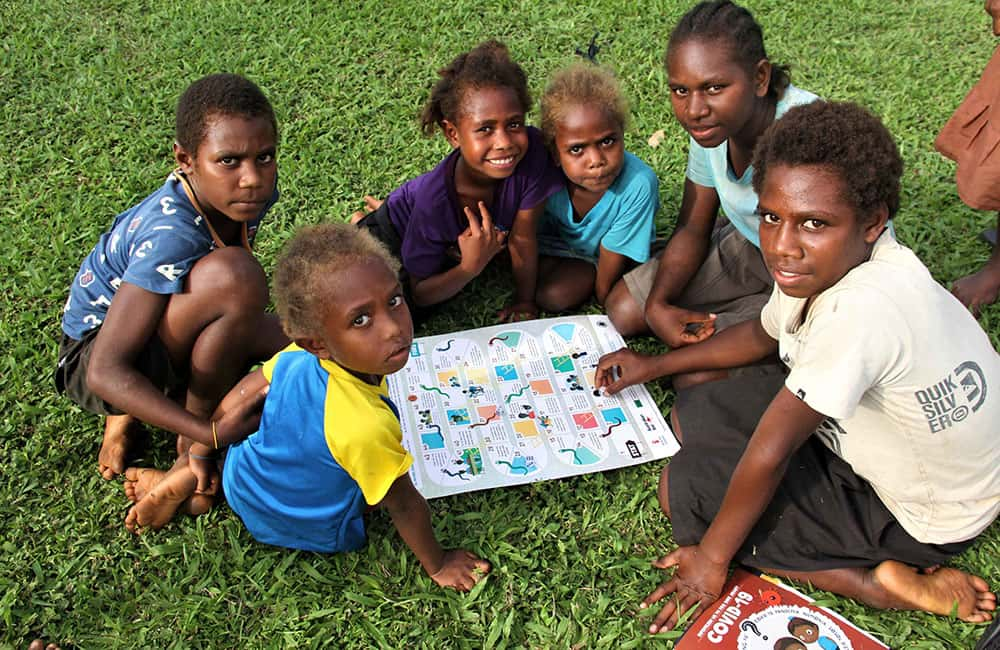After the cyclone, Maena helped her mum gather what building materials they could find and built a small shelter for the family.

Maena and her mum received a shelter kit, solar light and kitchen kit as well as fun educational
materials on COVID-19. This distribution was organised by Save the Children thanks to the in-kind
donation of our partner Care and its donor Shelter Box.
“We haven’t built a proper house yet, so we use one side of the shelter to sleep and the other end as our kitchen,” Maena added.
From surviving a cyclone to preparing for a pandemic
Around the world, Save the Children is working with families to ensure that they have what they need to protect themselves against the threat of COVID-19.
In Vanuatu, we were on the ground responding to the needs of children like Maena after cyclone Harold, providing essential support like shelter and hygiene kits. Yet we knew we would also have to maintain our focus on preparing communities for the pandemic.
One way of helping children understand how to protect themselves is to provide them with fun and engaging materials loaded with information about safe hygiene practices. Together with the Ministry of Health, and the Ministry on Education and Training, Save the Children within the Disaster READY partnership, created this fun game of Snakes and Ladders.

Children play Snakes and Ladders, an educational game promoting health and safety messages about COVID-19.
The game rewards good practices of safe hygiene, like hand washing and sneezing into your elbow with ladders, and dissuades unsafe behaviour, like forgetting to use soap, with snakes!
Distributed with Hygiene and Shelter kits for families affected by Tropical Cyclone Harold, these games were coupled with a child-friendly information booklet about COVID-19, providing additional information on what Ni-Van kids could expect, if COVID-19 ever came to their shores.
But, perhaps most importantly, the games provided parents with some space to organise themselves to start getting back on their feet after the cyclone, and gave kids the chance to just be kids once more.


Disaster READY is supported by the Australian Government and implemented through the Australian Humanitarian Partnership.
Photos: Nancy Lagdom, Save the Children